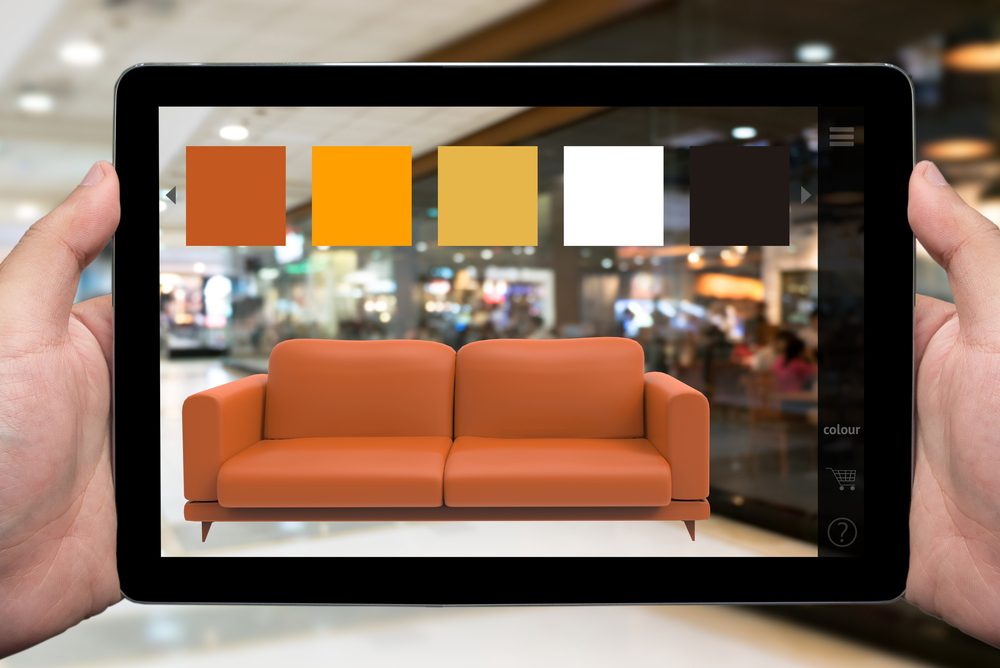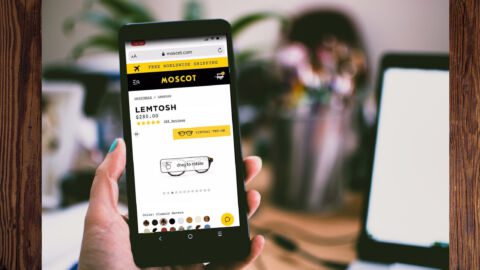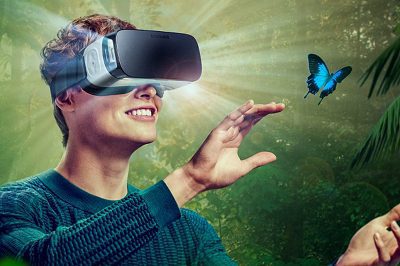Do you remember when the world went wild over the augmented reality (AR) game Pokémon Go? It was the first time we saw the mainstream potential of AR and how it could affect the retail industry. Businesses quickly jumped on the AR bandwagon by paying for “Lures” to add Pokémon to their radius, and ultimately bring consumers closer to their businesses when they went out hunting for characters.
AR has come a long way since then, with retailers such as Chairish, Anthropologie and Target implementing the technology into their e-Commerce and mobile offerings. But what will be AR’s long-term impact in the retail marketplace?
“We’re starting to see some adoption of AR, but in the foreseeable future, it will be more of a complementary piece,” said Adam Pressman, Partner at A.T. Kearney in an interview with Retail TouchPoints. “AR and VR each have a different use case they are really primed for. On the AR side, we’re seeing it as stronger on the true shopping experience because you’re bringing it together with a physical space.”
With the addition of the new Apple ARKit within iOS 11, followed by Google’s ARCore for Android, AR is generating more steam than its equally buzzworthy counterpart virtual reality (VR).
“The evolution for retail is going to come more from an AR perspective than a VR perspective,” said Dana Dojnik, Sr. Director of Strategy at You Are Here, an immersive experience studio. “That’s where you will see the shift over the next year. Six months ago, nobody had augmented reality on their phones. Now with the new iOS 11 that just came out for Apple, anyone who has iPhone 6S or above has the ability to utilize AR right on their phone.”
However, there are multiple points of view about AR: consumers are interested and their expectations are high, but many marketers are less enthusiastic — or are simply uncertain about how best to leverage the technology.
- Research from L.E.K. Consulting revealed that 80% of consumers want to use AR or VR to design rooms.
- An infographic from Augment highlights that 61% of consumers prefer to shop at stores that offer AR over ones that don’t, and 77% of shoppers want to use AR to see product differences.
- A report from DigitalBridge shows that of the consumers surveyed, 20% said they expect retailers to have an AR tool now that iOS 11 has been released, and 49% say they expect retailers to launch AR features within the next six months.
- Data from Yes Lifecycle Marketing shows that 55% of retail marketers say AR does not apply to their organizations.
Although marketers may not be on board with AR just yet, experts agree that they need to keep it in mind as new generations become consumers.
“Marketers and brands need to start thinking about the shift in dollars and where they want to start that focus,” said Dojnik. “There is a program in the UK where Google is giving out cardboard headsets to a million school children from kindergarten to high school. If that’s how these kids are now learning and adopting this very rudimentary technology, how do you think they will want to interact with brands as they become consumers of tomorrow? That’s what marketers have to keep in mind as they shift where their budget focus is.”
The Next Wave Of AR: Diminished Reality
While AR is cool, it’s a difficult technology to use to actually design a room. In order to design, users need to “create intelligence and behavior around the object,” according to Beck Besecker, CEO of AR/VR solutions company Marxent. For example, if the user is looking at a rug via AR, the object needs to be “smart enough” to know that it needs to go under the couch (rather than on top of the couch or on the ceiling).
AR is not currently at the point of attaching these types of behavioral data to visual objects, but it’s “coming soon,” according to Besecker. “People are investing in behavioral databases where the object is more intelligent than it’s just sitting on the ground,” he said. “That would be perfect if you have an empty room, but in 95% of use cases, people already have stuff in a room, so they would need to erase certain objects. That’s why it’s called ‘diminished reality.’”
With diminished reality, consumers can hold up their device and circle an object to delete from the space. Diminished reality basically makes the deleted object look as if it has disappeared from the room. “That’s really when — at least for the home goods space — AR becomes more than just a simple experience,” said Besecker.
The Scoop On Apple And Google AR Offerings
In September, Apple introduced its ARKit to bring augmented reality to the masses. Shortly after the announcement, Google replied with its own AR offering, dubbed ARCore. Both are available at no cost to developers from Google and Apple, but on the consumer end, the technologies will work only on the newest device operating systems. The kits embed into a retailer’s app in a way similar to a software development kit (SDK).
“Both solutions allow you to track a space,” said Besecker. “They use a form of dead reckoning. You know how pirates bury treasure, mark a spot and walk a certain number of paces — the tracking works the same way. It’s using the accelerometer and different technology in the phone to track movement. In order to do a ‘view in room’ AR — like what Houzz and Wayfair have done by putting a product in a scene — retailers also need a CMS [content management system] to house that content. That’s the other piece that needs to be implemented by retailers to use those solutions.”
In terms of “view in room” augmented reality, which simply showcases how certain items — such as a couch, dining table, etc. — fit into the consumer’s real-life domain, Besecker suggested that retailers think of it as an extension of photo and video content. “It’s one more way to interact with a product from [the retailer’s] web site,” he said. “People will only spend one to two minutes in that scene. But what we do see is that if AR is available, people will click through from 30% to 60% of the time.”
Porsche, Lego Use Cases Prove AR Can Impact A Variety Of Segments
It may seem as though AR is stuck in the furniture market right now, as a majority of retailers implementing the technology are using it so consumers can view products such as couches, chairs and rugs inside their homes. It’s a smart strategy, especially given that these are large, expensive items that are difficult to ship (and even more difficult to return). But can AR work in other industries? Companies like Porsche and Lego are proving that it can.
Build A Car With Porsche
Porsche recently introduced an AR app called Porsche Imagine-AR that allows customers to customize their dream Porsche from their homes using augmented reality. The company partnered with You Are Here to use its “ConfigurantAR” tool for shoppers to build their car, examine it from all angles, view it in different environments and take it for a test drive.
Get A Sneak Peek At Finished Lego Products
Augment reported that Lego is currently in the process of implementing AR kiosks in its retail stores to help children have a better view of finished products. Customers can scan a box of Lego before they purchase it, to see what the set will look like from all angles once it’s built.
AR is sure to stir up some interest in retail, and luckily for retailers, it’s pretty easy to implement. While reports have shown that many marketers are not yet on board with AR, consumers are showing their enthusiasm. This consumer interest should be enough to change marketers’ perception of AR and start thinking of ways to implement it in their businesses.













